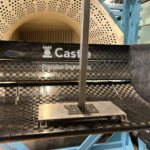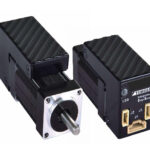Reading-based PTC has today announced the eleventh version of its Creo® computer-aided design (CAD) software and the latest version of its Creo+™ SaaS CAD solution.
This launch enables engineers to deliver their best designs in less time and enjoy a wide range of enhancements for electrification, composites, model-based definition, simulation-driven design, and manufacturing.

“Creo 11 and Creo+ deliver enhancements that design engineers will use every day,” said Brian Thompson, General Manager of Creo at PTC.
“Improvements to our AI-powered generative design and integrated Ansys-based simulation gives customers the opportunity to employ simulation-driven design earlier in the development process to improve time to market, initial product quality, and manufacturing cost.
“PTC has continued to invest in Creo’s capabilities for model-based definition (MBD), design of electrical sub-systems, composite designs, and advanced manufacturing.”
With Creo 11, clients have access to:
- Usability and Productivity Enhancements: Investments across the core modeling environment include support for multibody concepts, streamlining part design workflows, a refined Shrinkwrap feature for seamless assembly handling, and an upgraded enclosure volume feature for optimal packaging solutions.
- Improvements in Electrification: Strengthened capabilities in cabling and ECAD-MCAD collaboration align with the growing importance of electrification across industries. Customers can leverage cabling tools to manipulate locations precisely, place custom components more efficiently, and gain better visibility into harness structures. Additional ECAD features, like Transparency Control, improve visibility into PCB stack-ups.
- Enhanced Composite Design and Manufacturing: Advancements in composite design, simulation, and manufacturing capabilities continue to meet the needs of design engineers increasingly using composite materials.
- Expanded Model-Based Definition (MBD) Tools: More powerful model-based definition tools enable teams to easily organise design data in simple tables that can be read by humans and machines with user-defined text, parameter callouts, and semantic references.
- Simulation-Driven Design and Generative Design: Creo 11 introduces new simulation-driven design capabilities for better design ideation, guidance, and validation. Its generative design has been enhanced with minimum limits on feature size, bearing load support, and constraints for planar symmetry.
- Advanced Manufacturing Tools: Optimised additive and subtractive manufacturing tools ensure greater efficiency and versatility in the manufacturing process. Improvements include enhanced lattice structure creation, and smoother operations, such as 4-axis rotary milling and area turning.

In addition to the release of Creo 11, PTC announced the latest version of Creo+, which allows users to leverage the power and proven functionality of Creo in a SaaS solution with cloud-enabled collaboration and entitlement tools.
Creo+ is fully upward compatible with on-premises versions of Creo and is built on the same core technology, so no data translation is needed.
Creo 11 includes all the capabilities of previous Creo versions. For additional information on Creo 11, please click here or register for the launch webinar on May 15th.







